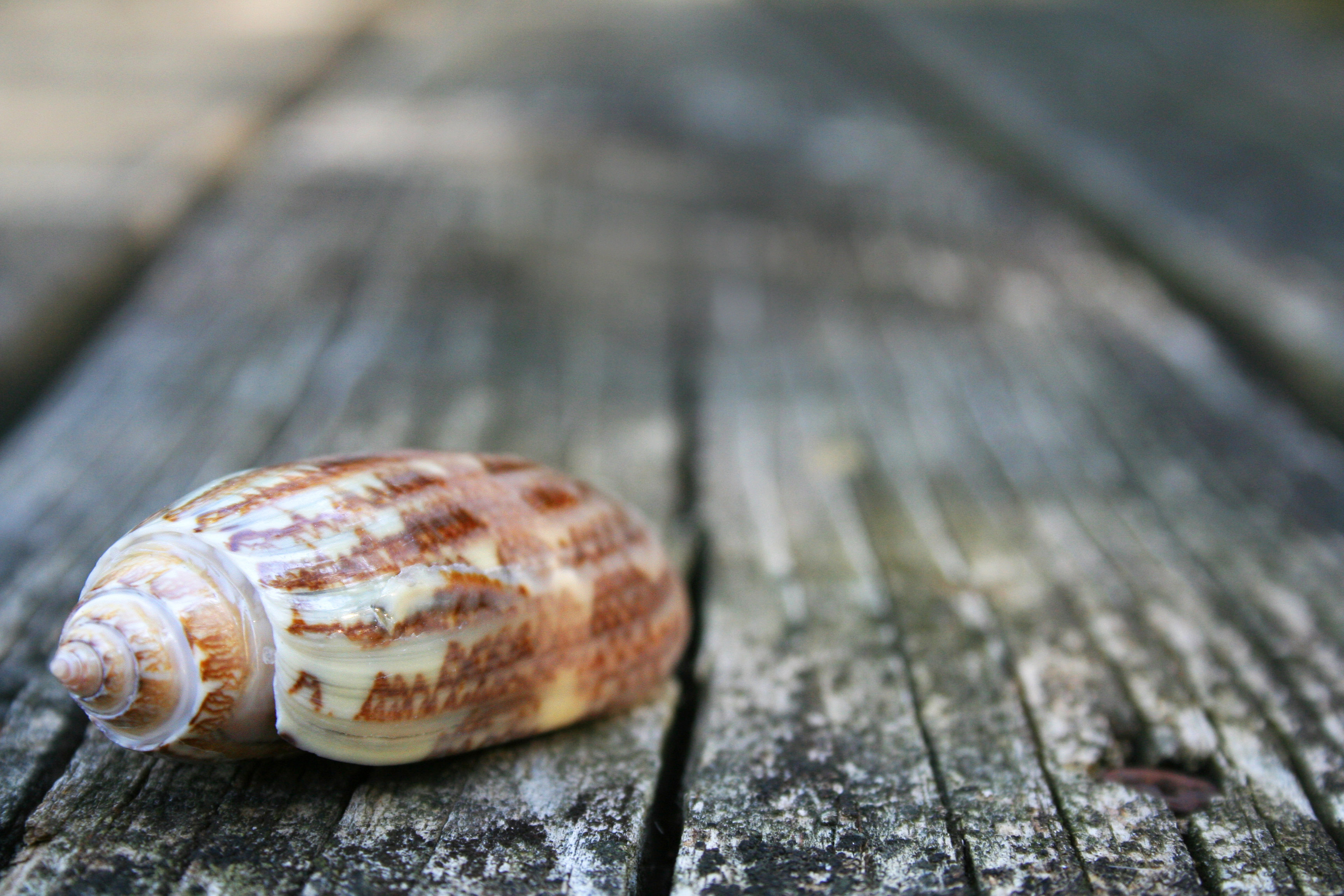
A Lettered Olive shell collected from the American coastline.
Finding unique shells on a beach is a wondrous experience. Young and mature alike never seem to tire of the fascination that comes with picking up an unbroken shell, turning it over, inspecting the details, and marveling at its composition. Each conveys natural artistry but not many shells rival the distinctiveness of the lettered olive, the official South Carolina State Shell.
Oliva Sayana was named the official state shell in legislation by Gov. Richard Riley on May 8, 1984. In the act, legislators described the South Carolina coast as “one of the most widely promoted areas . . . for recreation and tourism” and noted that shelling along the state’s beaches had become “increasingly popular among residents as well as with the tourist trade.”
State Symbols USA attributes early 19th century pioneer in conchology Dr. Edmund Ravenel of Charleston, South Carolina, with naming the lettered olive seashell, a prolific ornament along the South Carolina coast. Interestingly, Dr. Ravenel was not only a physician and naturalist, but he also helped establish the Medical College of South Carolina in 1824. He had a home on Sullivan’s Island, and by the outbreak of the Civil War had amassed a shell collection that included nearly 3,300 species of mollusks, which are shells with a calcareous exoskeleton that encloses, supports, and protects the soft parts of an animal living inside, such as a sea snail.
Rudy Mancke, University of South Carolina naturalist in residence and host of Nature Notes, pointed out in one episode of the show that the lettered olive refers to the letter-like writings inside and outside the shell, as well as what Dr. Ravenel thought resembled a rounded olive shape at its tip. While other types of shells are translucent or densely constructed, a distinguishing feature of the lettered olive is its shine. “Usually the shell is pretty shiny because the body of the animal comes out and covers the shell as it’s crawling in the sand and on the bottom of the ocean,” Rudy reported.
Inside an occupied lettered olive shell is a predatory snail that lives as far down as 20 feet in sandy environments from the intertidal zone, which simply refers to the area of a seashore covered at high tide and uncovered at low tide.
The snail living inside the lettered olive spends most of its time burrowing through the sand in search of prey, primarily smooth-surfaced clams. The snail lays 20 to 50 eggs at a time.
Lettered olive shells can develop up to 3 inches in length, but most are typically around 1 to 2 inches. Its coloring is a grayish tan with brownish-purple zigzag bands. And its shape is described by marine experts as having a low, pointed spire, four or five body whorls, and no operculum, a technical term for a gill cover.
Tybee Island Marine Science Center, based a few hours down the coast from the South Carolina barrier islands, offers a few fun facts about the lettered olive:
1)Native Americans made necklaces of the shells;
2)In the early 1900s the shells were collected and strung to make portières (door-curtains) to sell to tourists;
3)And sometimes common Atlantic slipper shells (Crepidula fornicata) attach themselves and ride piggyback on the surface of lettered olives.
With summer in full swing, don’t miss a chance to enjoy a walk on the beach to search for and treasure a lettered olive shell, appreciating not only its natural complexities but also its significance as a symbol for our state.










